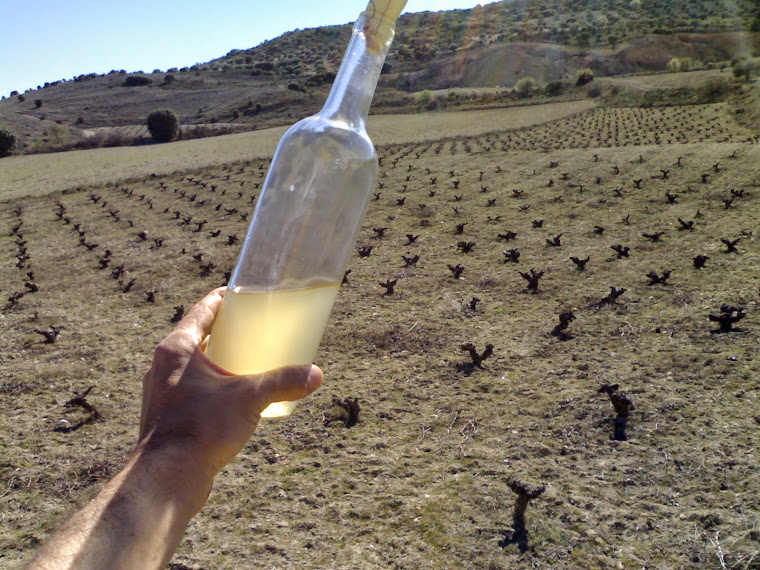It was a bit of a disaster commercially speaking, but I had a great day nevertheless, as I rested both physically and mentally from the bodega. Basically I sat on my butt all day on a chair behind my counter and chatted to my fellow organic producers and did a lot of good networking!
 |
| Calle Calatrava, Madrid |
 |
| Me and my wines! |
Next to me on one side was a nice couple, Gabi and María, who produce organic vegeatables in Chinchón, a town about 40 km from Madrid, and not far from Morata de Tajuña. They have a stand at the Mercado de la Cebada, a municipal market in the Latina District of Madrid. They also sell boxes of organic veg via the internet, and go by the name of Rayo Verde. On the other side was a producer of organic honey.
I also met a young photographer who works for an online newspaper (no paper version) that covers local events in Madrid: Madrid Diario. His name is Kike and he took this photo of me!
 |
| Me again! |
 |
| "El Almacén de Vinos" on Calle Calatrava |
 |
| Cheese 'n' wine tasting |
A great time was had by all but technically speaking the tasting was a bit of a disaster! The bar was full of normal customers and people who had come specially for the tasting, but there was no way to separate them, nor was there any way to get the normal customers to keep quiet while we spoke!
---------------------
Then yesterday (Thursday 15th) I spent at both bodegas, the old one in Morata de Tajuña and the new on in El Tiemblo, and a very pleasantly spent day it was too, because I was accompanied by two 'helpers': Nacho Bueno, a Spanish winelover and blogger (his blog is here, in Spanish) and who sponsored one of my barriques a few years ago (see this post) and with whom I made a coupage called "Las Cinco en Punto" (Five on the Dot) back in 2010. And Omri Ram, an Israeli wine student, who I knew from Facebook but who I met for the first time.
Here are my two helpers, working hard! Omri bottling up the Malvar Amphora 2012 and Nacho on the corking machine:
 |
| Happy Helpers :) |
 |
| Left-to-right: Malvar, Airén, Airén |
An orange wine (Malvar 2011) (above, leftmost) which I found in the boot of my car last week! It must have been in there for months, with the heat easily reaching 40ºC when parked out in the sun. So I wanted to see how it was. The cork had already been pushed out by about 1 cm. Incredibly the wine was just fine. Omri took it home with him, and hopefully he'll provide his opinion and some tasting notes shortly :)
The two Airéns above are EXACTLY the same except for the fact that one (right) was crushed in a manual crusher, while the other (middle) was crushed underfoot. Same vineyards, same day of harvest, same pressing, same fermentation tanks, same racking, same everything!
The other interesting wine was this experiment I did last year, with an unknown variety called Rojilla (see this post).
 |
| A big bottle of Rojilla |
 |
| Rojilla in the glass |
----------------------------
* Not a lot of people know this, but Tuesday 13th is considered to be a bad luck day in Spain, just like Friday 13th in English-speaking countries. Go figure. In Italy, it's Tuesday 17th! go figure even more!






























